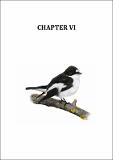Por favor, use este identificador para citar o enlazar a este item:
http://hdl.handle.net/10261/127546COMPARTIR / EXPORTAR:
 SHARE SHARE
 CORE
BASE CORE
BASE
|
|
| Visualizar otros formatos: MARC | Dublin Core | RDF | ORE | MODS | METS | DIDL | DATACITE | |

| Título: | Males respond to female begging signals of need: A handicapping experiment in the pied flycatcher, Ficedula hypoleuca |
Autor: | Cantarero, Alejandro CSIC ORCID ; López-Arrabé, Jimena CSIC ORCID; Palma Gómez, Antonio CSIC ORCID; Redondo, Alberto J.; Moreno Klemming, Juan CSIC ORCID | Palabras clave: | Female nutrition hypothesis Female condition Incubation feeding Feather clipping Parental provisioning Nest attendance Experimental handicapping Incubation behaviour Female begging Begging posture |
Fecha de publicación: | 11-jul-2014 | Editor: | Elsevier | Citación: | Animal Behaviour 94: 167-173 (2014) | Resumen: | The 'female nutrition' hypothesis proposes that food provided by males during incubation is an important energy source for females in bird species in which females alone incubate. Females should be able to communicate their needs through begging signals to mates and males may compensate for the energetic limitations of females through their feeding visits, owing to their overlapping reproductive interests. To test whether female begging during incubation is an honest signal of energetic need and whether mates respond to it we experimentally handicapped female pied flycatchers at the beginning of incubation by clipping two primary flight feathers on each wing. Experimental manipulation led females to intensify begging displays arising from condition impairment and males accordingly increased their incubation feeding rates. Female begging intensity explained more than half of the variation in male incubation feeding rate, thereby showing that female nutrition is the main factor explaining male incubation feeding. Moreover, handicapped females consumed a higher proportion of male food deliveries during the first few days after hatching and weighed less at the end of the nestling period than control females. Handicapping had no influence on female incubation behaviour, hatching and breeding success, nestling and male condition or female nestling provisioning. The provisioning rates of males in the late nestling stage were higher in experimental nests. This is the first experimental study showing that males adjust incubation feeding rates to behavioural displays of need by their mates. The ability of females to modify their begging displays according to need may be an important adaptation that allows females to maintain a good energetic condition during incubation. © 2014 The Association for the Study of Animal Behaviour. | URI: | http://hdl.handle.net/10261/127546 | DOI: | 10.1016/j.anbehav.2014.05.002 | Identificadores: | doi: 10.1016/j.anbehav.2014.05.002 issn: 0003-3472 |
| Aparece en las colecciones: | (MNCN) Artículos |
Ficheros en este ítem:
| Fichero | Descripción | Tamaño | Formato | |
|---|---|---|---|---|
| part7-Tesis Cantarero chapter6-.pdf | 913,15 kB | Adobe PDF |  Visualizar/Abrir |
CORE Recommender
SCOPUSTM
Citations
24
checked on 13-abr-2024
WEB OF SCIENCETM
Citations
23
checked on 22-feb-2024
Page view(s)
292
checked on 19-abr-2024
Download(s)
389
checked on 19-abr-2024
Google ScholarTM
Check
Altmetric
Altmetric
Este item está licenciado bajo una Licencia Creative Commons

